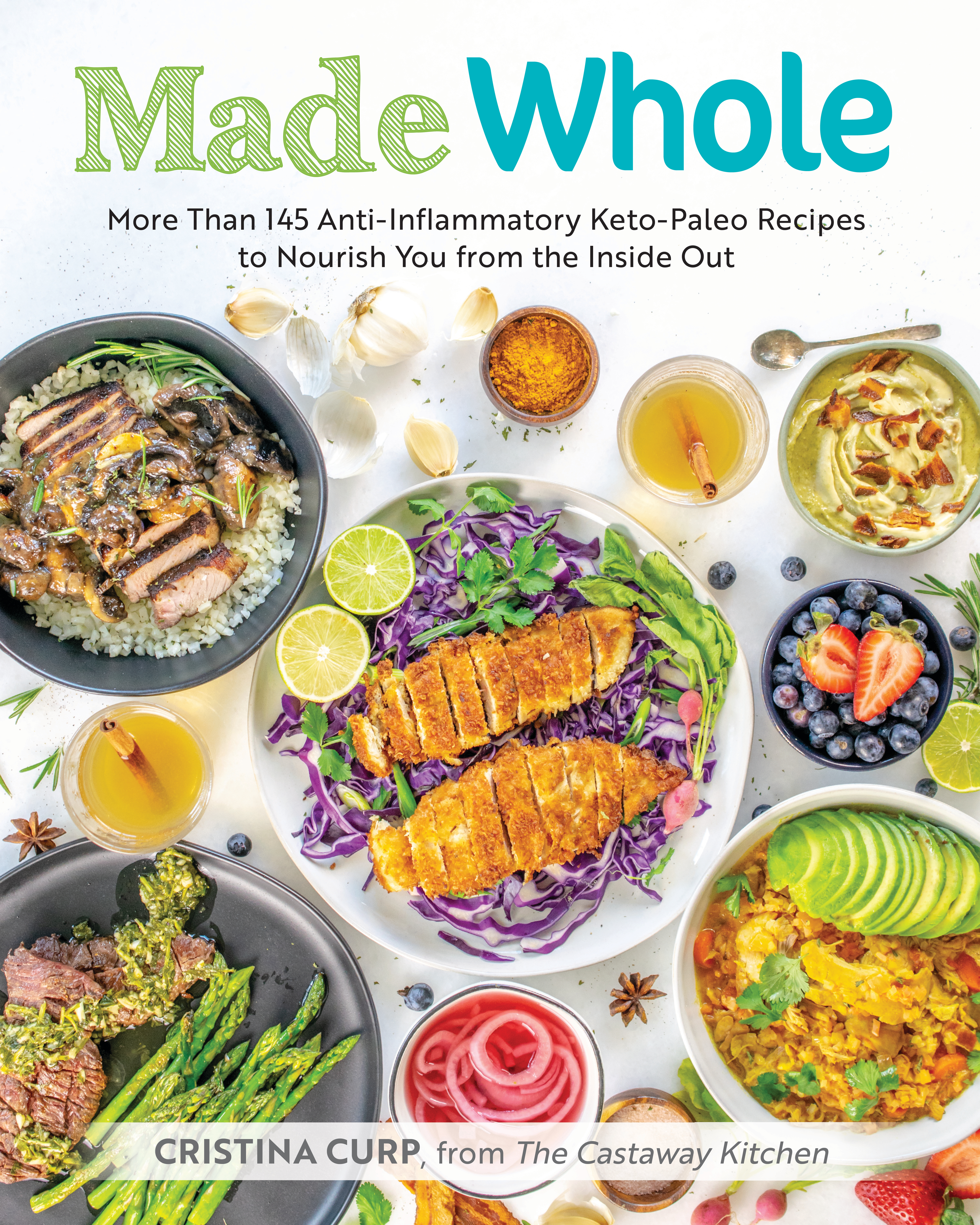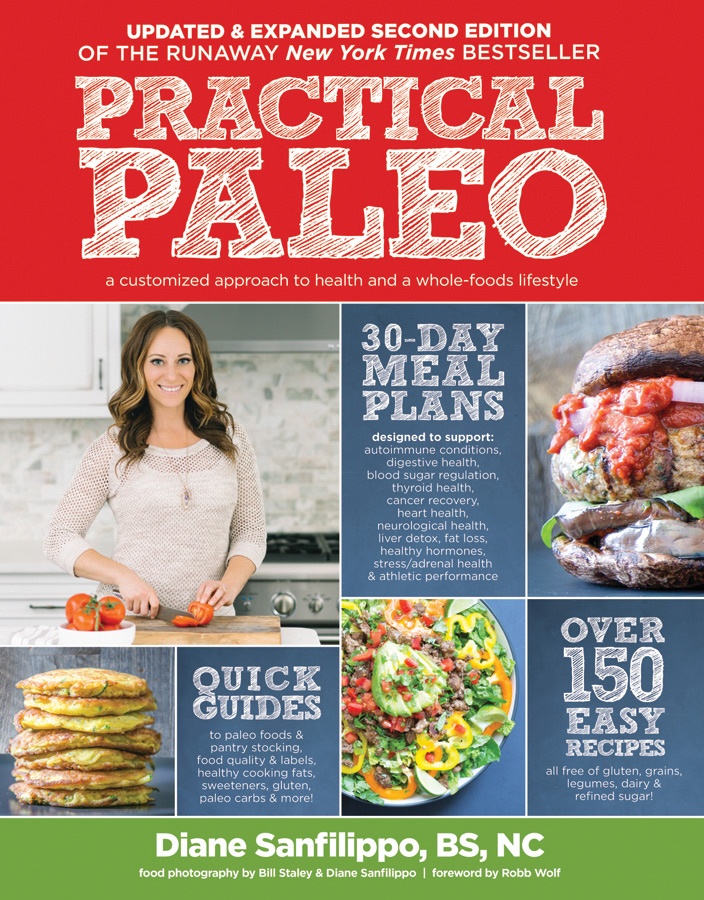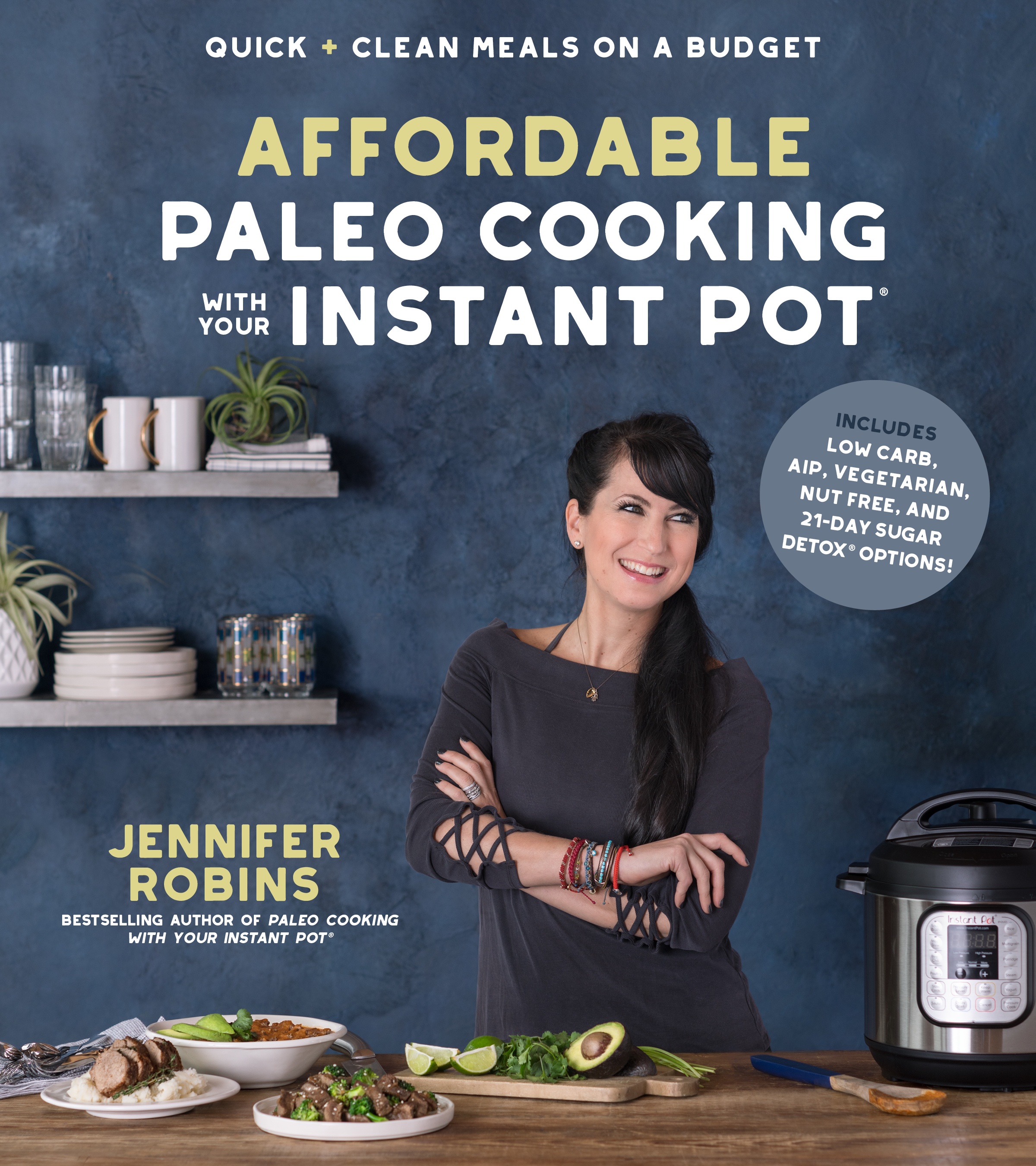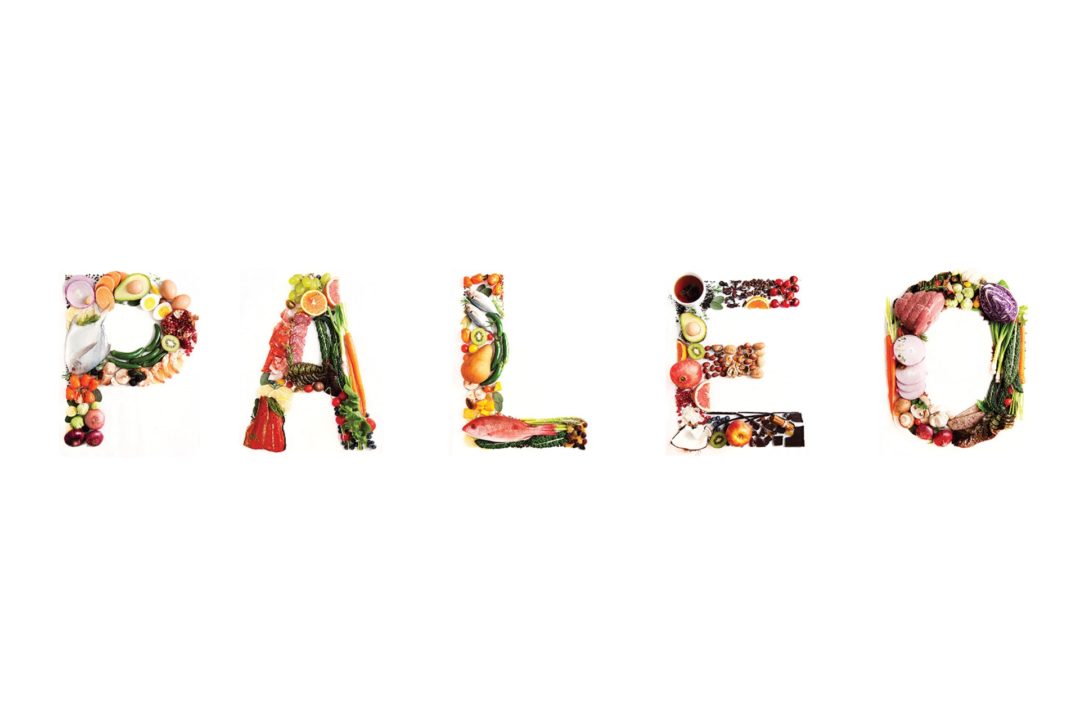The basics As explained on ThePaleoDiet.com, blog of The Paleo Diet author Loren Cordain, Ph.D., Paleo consists of 19-35% protein, 35-45% non-starchy fresh fruits and veggies for carbs, and enough fat intake to fill out the rest of the diet—a percentage range of 20-46%, depending on an individual’s intake of the other two (2). The website points out that this allows for a naturally high fiber intake—“Non-starchy vegetables contain eight times more fiber than whole grains and 31 times more fiber than refined grains”—which should be of interest to your customers, given the rise in interest in digestive health and the January 2019 study showing that dietary fiber can protect against cardiovascular disease and type 2 diabetes (2, 3). This diet increases intake of vitamins, minerals, antioxidants and phytochemicals, and naturally allows for a higher ratio of potassium to sodium.
Edible foods for Paleo include grass-fed meats, fish/seafood, fresh fruits and veggies, eggs, nuts and seeds, and healthy oils like olive and coconut (4). Teas and coffee can both be enjoyed. Foods to avoid include cereal grains, legumes, dairy, refined sugar, potatoes, processed or refined foods or oils, and salt (4). Dr. Cordain notes that Paleo follows an 85:15 rule—85% Paleo, 15% not, or around three meals a week that don’t have to be Paleo (5). “A little bit of cheating is a good thing if in the long run if it helps people stick to the diet,” he contends (5). Your customers will likely be relieved to know they don’t have to forego everything forever—they just shouldn’t make a habit of eating bread.
While that “don’t-eat” list looks like it takes out a lot—even gluten-free dieters get to eat some grains—help your customers see it as a path to food innovation. “Paleo simply brings options to the table,” says Mary Kosir, co-founder of WholeMe. “For WholeMe, the understanding of something being grain-free was an opportunity to think differently about traditional granola.” WholeMe granola clusters, she says, use a clean ingredient deck and natural sweeteners. She celebrates the innovation brought around by what others might see as a constraint: “With the elimination of grains, we got things like Cassava Flour, Coconut Flour, and Banana Flour, so there are many more options to bake, cook, and eat every day. The variety now available is fabulous for us.” While it’s a good idea to keep flours separate—you don’t want gluten from wheat flour floating into gluten-free flour—it’s also a good idea to make other flours pop: Signs that stick out from shelves with the Paleo Certified symbol might be useful. Conventional supermarkets use labels on their shelves to designate a “nutrition center,” or healthier, all-natural foods; you could use signage to designate a “nutrition innovation center”—grain-free or gluten-free flour, grain-free granola and other fresh takes.
Speaking of the Paleo Certified symbol—that’s now an option for foods, thanks to the Paleo Foundation (6). Kosir says it brings “peace of mind.” While it allows products to have some processing or packaging methods for shelf stability, it also guarantees that don’t-eat ingredients are not in that food.
The “don’t-eat” list, explained Some of the foods on the don’t-eat list make sense—refined and processed foods, for instance, obviously didn’t exist in the hunter-gatherer days, and aren’t healthy anyway. Grains, too, aren’t a stretch, although avoiding all grains might make less sense to those familiar with the concept of ancient grains. Some foods, though, might not seem to make any sense at all. If you’ve got lots of Paleo customers and find yourself googling what is and isn’t Paleo on a regular basis, the Ultimate Paleo Guide (UPG) has an app—Paleo.io—with more than 3,000 foods listed, so you always have the answer on hand. And your customers will appreciate learning about the app as well. Here, though, are some of the bigger sources of confusion:
Quinoa is heavily debated—the UPG says a person could read 10 articles about quinoa and get the same number of theories about whether or not it’s Paleo and why (7). The Ultimate Paleo Guide’s position on the matter? “Yes and no.”
Here are the facts, according to Joel Runyon, founder of UPG and CEO of Paleo Meal Plans: Quinoa is technically a seed, not a grain, and seeds are paleo (7). And those looking for a grain alternative, he says, should choose quinoa; it’s got less potential for damage than regular grains. However, it requires processing in order to be consumed, which goes against the basis of Paleo (7). Quinoa is a 53 on the Glycemic Index, making it undesirable on this plan. Another strike when it comes to Paleo: Quinoa contains saponins and lectins, which are “antinutrients”—according to Nell Stephenson, B.S., blogger for ThePaleoDiet.com, antinutrients are naturally occurring substances that interfere with absorption or proper functioning of nutrients in the body (8). They are indigestible and capable of binding to nutrients, and can damage the gut, leading over time to inflammation, leaky gut, and a variety of other issues.
Potatoes suffer from similar problems: A Glycemic Index of anywhere from 83 for mashed potatoes to 111 for Russet potatoes; a high content of antinutrient saponins, which can create holes in the gut lining; and they contain lectins, which are minimally studied, but which may resist degradation by gut enzymes and irritate the immune system, according to Dr. Cordain (9).
Peanuts are, first of all, technically legumes, which are on the don’t-eat list. Legumes are chock full of antinutrients, according to UPG, which can be minimized by sprouting and fermenting them, but which can’t be gotten rid of entirely (10). Besides that, Marc Bubbs, N.D., CISSN, CSCS, writes on ThePaleoDiet.com that up until the agricultural revolution, legumes were rarely consumed because they were particularly difficult to digest (11). Dr. Bubbs also notes that, although peanuts are on paper a great source of iron, healthy fat, biotin, vitamins, and fiber, the iron is non-heme—more difficult to digest than the heme form found in animal protein—and bound to phytates, which decreases absorption.
Salt is, as Dr. Cordain has explained, the furthest thing from Paleo (12). Definitionally speaking, it can’t possibly be Paleo: “Almost all non-processed, non-salted foods in contemporary Paleo Diets contain low concentrations of sodium. Similarly, virtually all wild, non-domesticated foods are quite low in sodium.” He examined a table listing sodium concentrations in Paleo foods, and found that exceeding recommendations for sodium intake would require a diet of primarily shellfish, and that even meeting those recommendations on a Paleo food formula would be difficult (12).
Dr. Cordain also has taken care to address the field of thought that says sodium might be necessary, and that there is a “U” shaped relationship between sodium intake and risk of mortality—that is, while a high sodium intake is dangerous, so is a low sodium intake. Studies that show that relationship, he says, don’t evaluate sodium levels as frequently as other studies (12). They might also be misattributing cause and effect: lower sodium intakes may be correlated with high risk for cardiovascular disease because those with cardiovascular disease are told to reduce their salt levels.
Paleo success in a nutshell Given all of this, it’s probably safe to say that going Paleo requires a diet overhaul. Plenty of foods are obvious, one way or another—but there’s a pretty big gray zone that can be difficult for your customers to navigate. Turn that into an opportunity for you and your store, and become the go-to for Paleo dieters in your area. Put signage suggesting that Paleo customers bring questions to your staff. Consider putting color-coded stickers on the shelf-talkers for products for special diets—blue for Paleo foods, green for gluten-free options, red for keto, and so on, so that your customers can see at a glance whether a product is appropriate for them. Informational pages on your website—an overview of the diet, with “Come in and talk to an employee for personalized help with meal planning” at the bottom—can demonstrate to customers that you are in-the-know and should be the main source for all of their Paleo diet needs. WF
Good Health Reads: Top-selling Paleo books
 Made Whole: More Than 145 Anti-Inflammatory Keto-Paleo Recipes to Nourish You from the Inside Out (Victory Belt Publishing, 2018) by Christina Curp
Made Whole: More Than 145 Anti-Inflammatory Keto-Paleo Recipes to Nourish You from the Inside Out (Victory Belt Publishing, 2018) by Christina CurpThis cookbook combines Paleo with Keto, using only whole, natural, unprocessed ingredients. All recipes are free of grain, gluten, sugar, dairy, nuts, starches, and nightshades, and according to Amazon reviewers, recipes that aren’t Paleo come with suggestions for making them Paleo. Reviewers raved about the flavor profiles and ease of cooking.
 Practical Paleo, 2nd Edition (Updated and Expanded): A Customized Approach to Health and a Whole-Foods Lifestyle (Victory Belt Publishing, 2016) by Diane Sanfilippo
Practical Paleo, 2nd Edition (Updated and Expanded): A Customized Approach to Health and a Whole-Foods Lifestyle (Victory Belt Publishing, 2016) by Diane SanfilippoThe second edition of Practical Paleo includes answers to common questions, customization, tips and suggestions for navigating parties and family conversations, and 40 new recipes. With 2,752 customer reviews and 4.7 stars on Amazon, and a variety of reviews beginning with “wow,” the second edition of this book seems to live up to expectations.
 Affordable Paleo Cooking with Your Instant Pot: Quick + Clean Meals on a Budget (Page Street Publishing, 2018) by Jennifer Robins
Affordable Paleo Cooking with Your Instant Pot: Quick + Clean Meals on a Budget (Page Street Publishing, 2018) by Jennifer RobinsRobins’s book uses easy-to-find, inexpensive ingredients, and an instant pot for a quick meal. One reviewer says this cookbook is for real people, with busy lives, who want real ingredients and great taste. Fast, healthy, easy Paleo is this book’s selling point, and its 4.7 stars on Amazon suggest Robins accomplished that.References
- Mayo Clinic Staff, “Paleo diet: What is it and why is it so popular?” MayoClinic.org. Posted 8/8/17. Accessed 2/27/19. https://www.mayoclinic.org/healthy-lifestyle/nutrition-and-healthy-eating/in-depth/paleo-diet/art-20111182
- “What Is the Paleo Diet?” ThePaleoDiet.com. Accessed 2/27/19. https://thepaleodiet.com/the-paleo-diet-premise/
- WholeFoods Magazine Staff, “Study: Dietary Fiber Protects Against Cardiovascular Disease, Diabetes,” WholeFoodsMagazine.com. Posted 1/31/19. Accessed 2/27/19. https://wholefoodsmagazine.com/grocery/news-grocery/study-dietary-fiber-protects-against-cardiovascular-disease-diabetes/
- Paul Vandyken, “What to Eat on the Paleo Diet?” ThePaleoDiet.com. Posted 10/12/16. Accessed 2/27/19. https://thepaleodiet.com/what-to-eat-on-the-paleo-diet-paul-vandyken/
- The Paleo Diet Team, “Q&A With Dr. Cordain,” ThePaleoDiet.com. Posted 4/21/12. Accessed 2/27/19. https://thepaleodiet.com/qa-with-dr-cordain-3/
- “Steps to Paleo Certification.” com. Accessed 2/27/19. https://paleofoundation.com/steps-to-paleo-certification
- Joel Runyon, “Is Quinoa Paleo? A Deep Dive,” UltimatePaleoGuide.com. Posted 12/8/12. Accessed 2/27/19. https://ultimatepaleoguide.com/is-quinoa-paleo-a-deep-dive/
- Nell Stephenson, “Antinutrients, the Antithesis of True Paleo,” ThePaleoDiet.com. Posted 3/11/15. Accessed 2/27/19. https://thepaleodiet.com/antinutrients-the-antithesis-of-true-paleo/
- Loren Cordain, “Are Potatoes Paleo?” ThePaleoDiet.com. Posted 8/9/14. Accessed 2/27/19. https://thepaleodiet.com/are-potatoes-paleo/
- Joel Runyon, “Are Peanuts Paleo?” UltimatePaleoGuide.com. Posted 8/25/14. Accessed 2/27/19. https://ultimatepaleoguide.com/peanuts-paleo/
- Marc Bubbs, “Can Peanuts Be Part of A Paleo Diet?” ThePaleoDiet.com. Posted 1/20/17. Accessed 2/27/19. https://thepaleodiet.com/peanut-butter-is-it-paleo/
- Loren Cordain, “The Sea Salt Controversy: Important Updates for your 2017 New Year’s Resolution,” ThePaleoDiet.com. Posted 1/2/17. Accessed 2/27/19. https://thepaleodiet.com/the-sea-salt-controversy-important-updates-for-your-2017-new-years-resolution/









